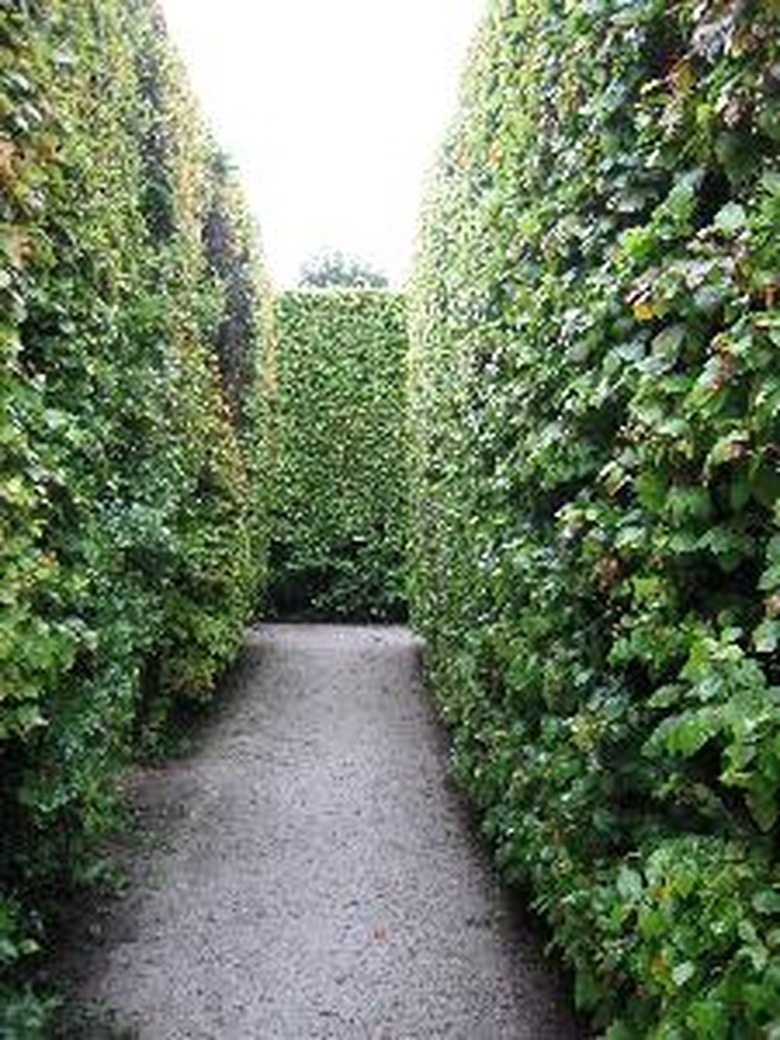The Best Type Of Evergreen Privacy Hedge
The best type of evergreen privacy hedge is a dense barrier to sight, sound and wind, fast-growing to the height you want it to reach and low-maintenance. Most evergreens used for hedging meet these criteria, although there are poor choices, too. Avoid holly with prickly leaves if you have pets or children or like to walk barefoot in your yard. Although it is evergreen, it sheds and renews its leaves.
Fast Growers
If you need privacy fast, English laurel, Portuguese laurel and wax-leaf privet grow quickly and thickly. The laurels will need yearly trimming once they reach hedge height. Left unpruned, they grow to 20 feet, at a rate of about 5 feet a year. Wax-leaf privet grows to 12 feet.
Choices for Shade
In the shade, Japanese holly, which has non-spiny leaves and grows to 10 feet, makes a dense hedge that is easily trimmed. Sky pencil holly grows to 10 feet in a columnar shape 2 feet wide. It has dark green boxwood-like leaves. Densa, an inkberry holly variety, also reaches 10 feet. Yew, a dark-needled conifer, also tolerates shade. The Hicks yew grows to 12 feet in 10 years, 20 feet at maturity.
Arborvitae
Arborvitaes are the easiest choice for an evergreen hedge. They require little or no pruning, grow to 20 feet and can be purchased economically in large sizes. Green emerald, a common variety for urban gardens, grows to 12 feet. The green giant variety grows to 30 feet at a rate of 5 feet a year once established. Arborvitaes are drought-tolerant and disease-resistant.
Spacing
For a healthy hedge, don't space the plants too tightly, or they will crowd each other when they mature, causing disease and insect problems because of lack of air circulation and light. Five feet apart is a good rule of thumb. Instead of a straight row, planting in a zigzag pattern can be more interesting and allows sunlight to reach all sides of the plant.
